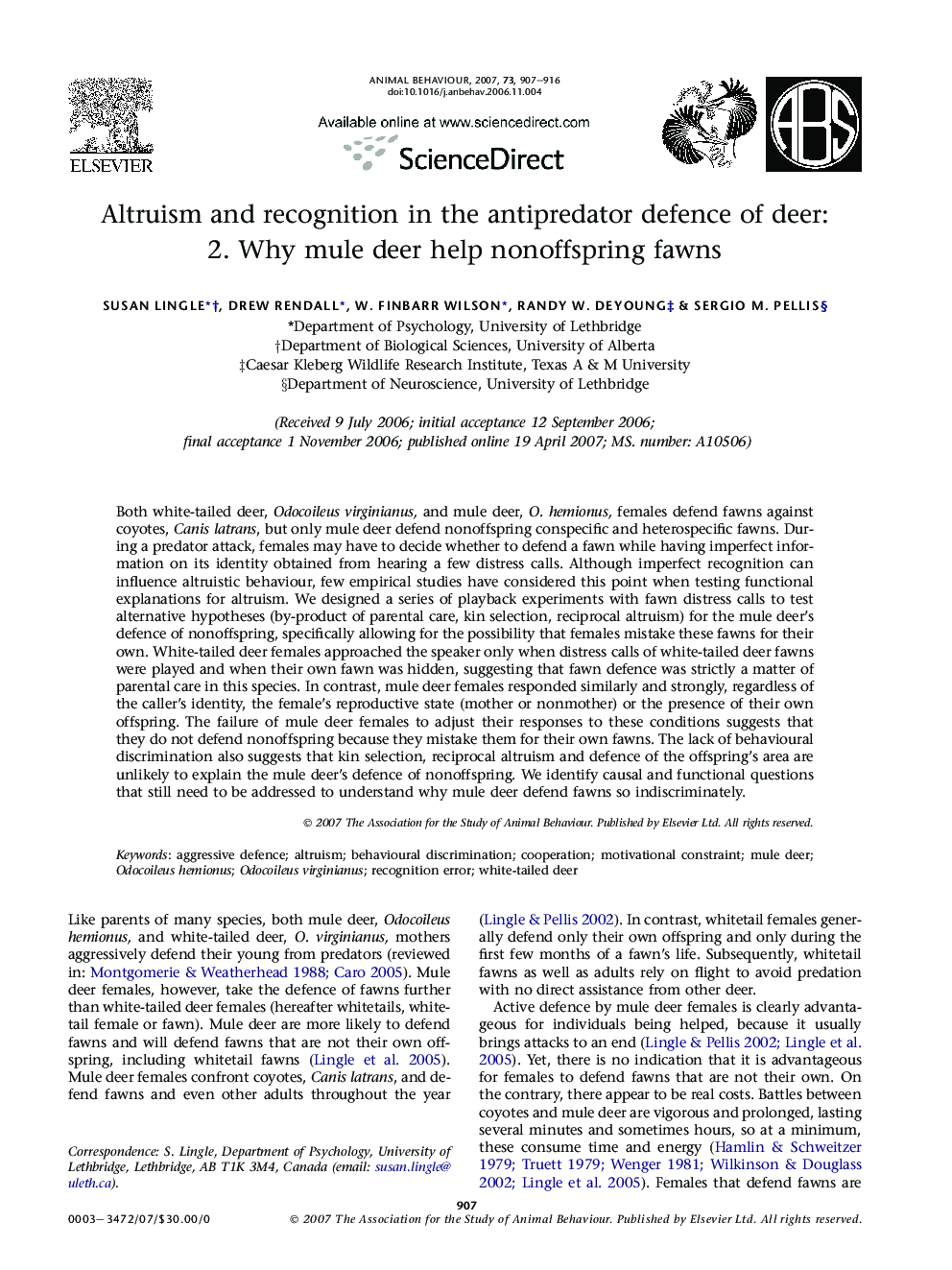| کد مقاله | کد نشریه | سال انتشار | مقاله انگلیسی | نسخه تمام متن |
|---|---|---|---|---|
| 2419003 | 1104362 | 2007 | 10 صفحه PDF | دانلود رایگان |

Both white-tailed deer, Odocoileus virginianus, and mule deer, O. hemionus, females defend fawns against coyotes, Canis latrans, but only mule deer defend nonoffspring conspecific and heterospecific fawns. During a predator attack, females may have to decide whether to defend a fawn while having imperfect information on its identity obtained from hearing a few distress calls. Although imperfect recognition can influence altruistic behaviour, few empirical studies have considered this point when testing functional explanations for altruism. We designed a series of playback experiments with fawn distress calls to test alternative hypotheses (by-product of parental care, kin selection, reciprocal altruism) for the mule deer's defence of nonoffspring, specifically allowing for the possibility that females mistake these fawns for their own. White-tailed deer females approached the speaker only when distress calls of white-tailed deer fawns were played and when their own fawn was hidden, suggesting that fawn defence was strictly a matter of parental care in this species. In contrast, mule deer females responded similarly and strongly, regardless of the caller's identity, the female's reproductive state (mother or nonmother) or the presence of their own offspring. The failure of mule deer females to adjust their responses to these conditions suggests that they do not defend nonoffspring because they mistake them for their own fawns. The lack of behavioural discrimination also suggests that kin selection, reciprocal altruism and defence of the offspring's area are unlikely to explain the mule deer's defence of nonoffspring. We identify causal and functional questions that still need to be addressed to understand why mule deer defend fawns so indiscriminately.
Journal: Animal Behaviour - Volume 73, Issue 5, May 2007, Pages 907–916